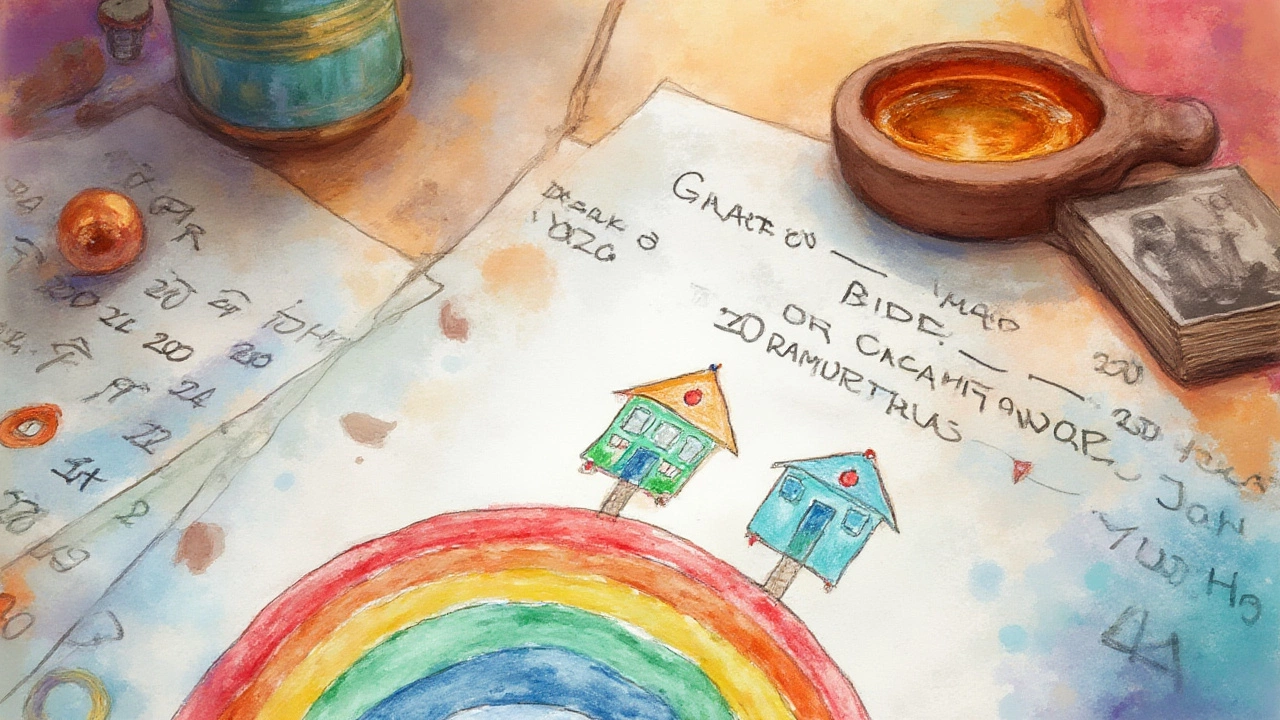Picture this: you’re trying to figure out your child’s future, but California’s custody process feels like trying to solve a puzzle blindfolded. The court dates keep moving, the paperwork piles up, and friends say it will take ages. So, how long does a child custody case in California really take? If you’re hoping for a one-size-fits-all answer, you’re out of luck. The reality is, child custody cases can be unpredictable—ranging anywhere from a few months to over a year for complicated situations. Whether you’re just beginning or halfway through, knowing what affects the timeline helps lower the stress and keeps you one step ahead.
What Factors Shape a California Custody Timeline?
If you hear someone boast, “My custody case was done in 6 weeks!” take it with a grain of salt. While it’s true that some uncontested cases wrap up quickly, most cases have bumps along the way. A big reason for the wait? California family courts are always busy—Los Angeles County alone gets thousands of filings every year. In 2023, there were about 65,000 new family law cases filed statewide, and custody makes up a huge share of that. Even a perfectly organized parent faces court calendars jammed months ahead.
Several things impact how quickly a custody case moves:
- Type of custody dispute: If you and your ex agree on everything, it’s faster to get a court order—sometimes in under 3 months. But if you can’t agree on where your child should live, which school is best, or how holidays get split, expect several hearings and maybe even a trial.
- Emergency orders: If there’s an urgent risk to a child’s health or safety, courts jump into action and issue temporary orders within days or weeks. These don’t finalize custody, but they put safeguards in place while the long process unfolds.
- Court congestion: Some counties wrap cases up faster than others. Ventura might move quicker than Los Angeles, but even in the fastest counties, summer and end-of-year spikes can clog the system.
- Attorney schedules: Both sides’ lawyers juggle several cases, so simply coordinating a hearing can push everything weeks later.
- Custody Evaluations: If parents can’t agree, judges may order a 730 Evaluation—an expert assessment that can delay things by 2-4 months, depending on the expert’s availability and how complex the case is.
Add in holidays, school schedules, and sometimes parents moving out of town, and you’ve got the recipe for a painfully slow journey. Sometimes mediation is required by the court. In California, before a judge will hear custody disputes, parents usually must try mediation (called "Child Custody Recommending Counseling" in some counties). Scheduling and finishing mediation can tack on weeks or months.
If you want a rough idea of actual wait times (based on public state data and legal experts’ averages from recent years), here’s a breakdown:
| Case Type | Typical Timeline | Notes |
|---|---|---|
| Uncontested Custody | 2-3 months | Both parents agree on terms |
| Contested – Simple | 6-9 months | Few disagreements, cooperation possible |
| Contested – Complex | 12-18 months | Major disputes, custody evaluations, maybe a trial |
| Emergency Temporary Orders | 2-4 weeks | Quick, short-term solution |
Rarely does a case finish as quickly as TV dramas show. Even a basic case can drag if one parent doesn’t fill paperwork out correctly or misses a court date. Missing deadlines can push cases months down the road. So, paying attention to details and keeping documents organized can actually save huge amounts of time. Even simple mistakes—like using an outdated form—can cost weeks when the court has to reject and return your paperwork. For most families, it pays to double-check everything before hitting submit.

Steps in the California Child Custody Process
If you’re about to start, knowing the process can help you spot roadblocks before they hit. California doesn’t make it easy—there are forms, set routines, and plenty of jargon. But break it down, and the whole journey looks like this:
- Filing the Initial Paperwork: The process kicks off when a parent files a Request for Order (Form FL-300) and gives official notice to the other parent. There’s a filing fee (currently about $435 in most counties), and you’ll need details about your child’s school, living situation, and health.
- Mediation: Most counties won’t let your case see a judge until mediation happens. This is where both parents try to hash things out with the help of a neutral counselor. Sometimes, mediation leads straight to agreement, especially when both parents keep the drama low and focus on the child.
- Temporary Orders: If there’s an immediate problem—say, one parent plans to move out of the state—one can ask for temporary orders. The court schedules a quick hearing to issue short-term rules until the case is settled.
- Response from the Other Parent: The other parent has a set amount of time (usually 30 days) to respond. No response? The court can give the filing parent what they’re asking for, but this is rare in contested cases.
- Investigation or Evaluation: If parents can’t agree, judges may order extra checks. A custody evaluation (called a “730 Evaluation”) is the most common, but child interviews or home visits happen, too. This part can add months, as experienced evaluators often have waitlists, especially around the start of the school year.
- Settlement Attempts: Often, judges push both sides to make more agreements outside the courtroom. California courts prefer parents figure out their own arrangements instead of handing control to a judge.
- Final Hearing or Trial: If no agreement appears, your case heads to a full hearing—sometimes even a bench trial (no jury, just a judge who decides). Evidence, witnesses, and expert opinions come out here. A busy trial calendar can slow things down, so sometimes families wait a few months just for their court date.
- Judgment and Custody Order: After the trial, the judge issues written orders. This can take a few days or several weeks, depending on court backlog and case complexity.
- Possible Appeals or Modifications: If something big changes (job loss, relocation, major health issue), either parent can ask for a modification—but this can launch the process all over again.
Any curves along the way—like one parent suddenly refusing to cooperate, new evidence coming to light, or an unexpected emergency—can reset the schedule or add fresh hearings. Staying flexible and prepared is key. And always keep track of your court’s calendar. Some courts post timelines online, with slot availability for the next 3-6 months. It pays to check often, especially during mid-year school breaks when cases spike.
Want to keep your case moving fast? Make friends with paperwork. Keeping every document—you’ll be shocked how many pieces of paper are needed—organized and ready means less time wasted. A lot of legal pros say parents can cut weeks off their timeline by staying ready and proactive. Set calendar reminders so nothing is missed, and check your county’s court website regularly for updates and local rule changes.

Tips for Surviving the Wait: How Families Can Cope
No matter how much you organize or push for speed, sometimes the process just drags. So what can you really do during the wait?
- Stay Child-Focused: Every court—no matter the county or judge—cares most about your child’s best interests. Showing in court that you’re prioritizing your kid’s happiness, education, and emotional stability can influence results.
- Don’t Badmouth: Judges hate when parents use kids as messengers or speak poorly of the other parent. It’s a quick way to lose credibility and even visitation time.
- Act Quickly: If you get a notice about paperwork, a court date, or mediation, respond right away. Delay on your end can be mistaken for lack of interest or for trying to game the process.
- Use Free Legal Support: Every California courthouse offers self-help services. Trained folks there can help you fill forms or double-check you’re using the right ones—something that can slice weeks off mistakes.
- Prepare for the Unexpected: Just when things seem to be moving, an illness, job change, or school issue can force you back to square one. Have a backup childcare plan, extra copies of all documents, and a way to keep everyone updated.
- Consider Custody Agreements: Parents can speed things up massively by coming to agreement—even on just some parts. The court can make temporary or partial orders, which helps families get at least some stability fast, while big disputes get sorted out later.
- Document Everything: Save texts and emails relating to the case, communication with the other parent, and your involvement in your child’s daily life. Courts rely on a paper trail to make decisions, and solid records can save time and headache.
And here’s a twist most people don’t realize—California law actually expects judges to decide child custody orders “within a reasonable period,” but, it never defines what that means in plain numbers. So, families often live in legal limbo. Even then, every case is unique and some can stretch beyond typical timelines, often because of big disputes over schooling, allegations of abuse, or when one parent drags their feet on purpose.
If you’re feeling frustrated, you’re not alone. Around 54% of parents in custody disputes report they spent at least six months waiting for final orders, according to a 2022 survey by the California Family Law Association. And more than a quarter said delays made things tenser at home.
The good news: most families, even with bumps along the road, eventually get some closure. The key is knowing what to expect and putting your effort into things you can control—not the pace of the court system, but your own prep, paperwork, and parenting game.


